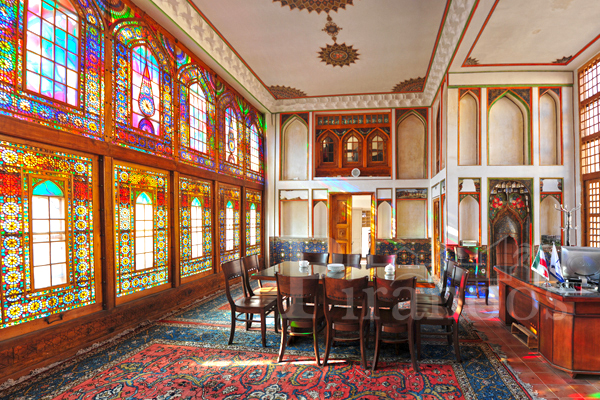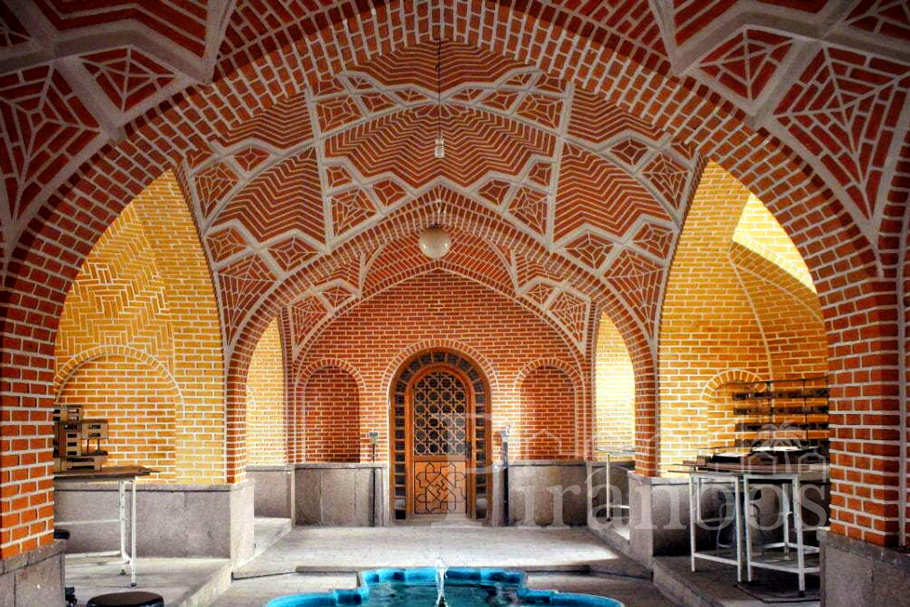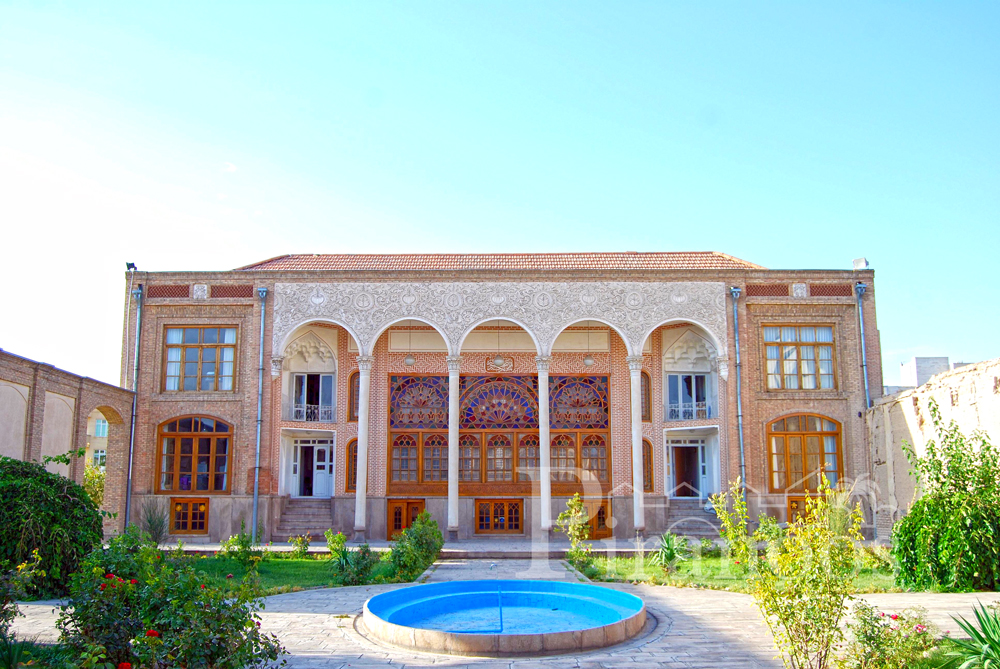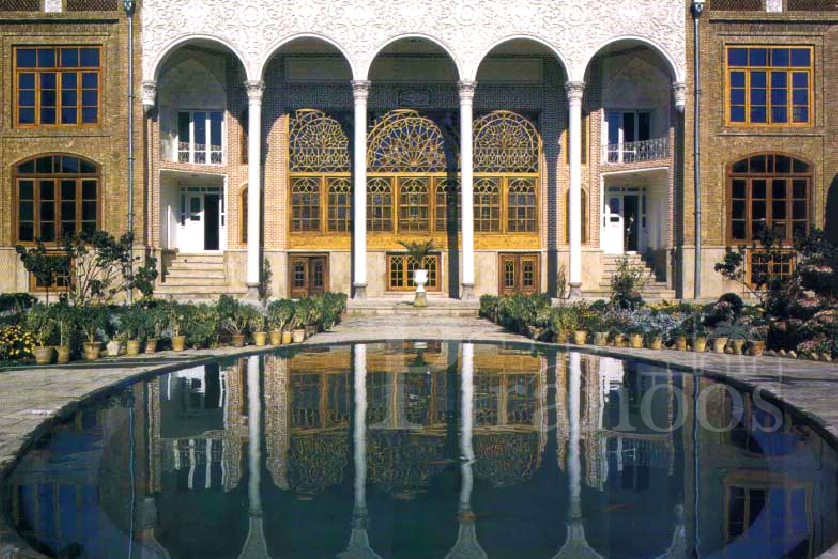Behnam House or Behnam Ganjei or Ghadaki dates back to the late years of Zandiyeh era and the early years of the Qajar period, and is located in Tabriz. Tabriz has faced many ups and downs throughout its history. This city flourished during the Qajar period, as it was known as the most important and leading city of Iran in this period. Tabriz was the second most prosperous city of Iran during Qajar era and it has about 300 valuable old houses. Behnam House is one of them that stands out as the most beautiful historical house in Tabriz city. Behnam House (or Ghadaki House) is located near Tabriz Bazaar and Maghsoudieh Street. It was registered as one of Iran’s national monuments in year 1997.

Behnam House was originally built as a residential house but later was reconstructed during the reign of Nasser al-Din Shah Qajar and was decorated with very graceful paintings. In the recent renovation of this house, several Iranian Fresco paintings (Wall painting) have been discovered that are now being repaired by specialists. Currently, this house, along with other historical buildings such as the Ganjei House, the Ghadaki House, the Sadaghiani House, and the Javaherian House, form the architectural complex of Tabriz University of Art.

Behnam home is marked from the other architectural complex buildings by a stunning octagonal main entrance with amazing brickwork and turquoise tiles. Architects who have studied the house believe that one of the hallmarks of this historical masterpiece is the complexity of the building, the architectural plan and the variety in size of the rooms while holding the symmetry in appearance. This 3,000-square-meter structure, with its artistic colorful stucco, stuns the eyes of every viewer. The interior and exterior buildings of this house were rebuilt during the Qajar period and in addition to its picturesque interior decorations, it has one of the most practical Iranian architectures suitable for different seasons of the year.

Like many old Persian houses, this house has two courtyards: inside and outside and it includes a main building as a qishlaq (winter place) on the north side of the courtyard with a beautiful seven-door orosi, it stands out in the middle of its beautiful view and a small building as a Yeylaq (summer place). The entrance to the building is through the Moshir-Daftar alley and through the corridor behind the Ghadaki House. After the entrance, you will see an elegant vestibule which reaches the courtyard- garden. The north porch with its plastered wooden pillars was the Shah-neshin room (the five-door guest room in traditional Iranian houses). The western part of the building, which has now been demolished, is located in the stables, the kitchen, the toilet and so on.

The Tanabi or the great seven-door room has enchanting and beautiful orosi windows which open to the north and south with amazing colorful glasses. The Ivan (porch), with its tall and great columns, is located in the south of Tanabi. The height of the columns of the north porch is the same as the height of the Tanabi, and the Goushvar rooms (smaller rooms on either sides of the Shah-neshin) are on the sides of the Tanabi. The Howz Khaneh (the pool house in Iranian architecture) below the Tanabi chamber has a dome-shaped ceiling that along with fascinating brick framing, side platforms and a beautiful stone pond creates a magical atmosphere.
Behnam historical house mesmerizes you with its delicate architecture, beautiful colorful orosi windows, vaults and arches, tall and spacious verandas, and the red brick facade and the pond in the middle of the courtyard.
If you are a fan of Iranian history, culture and architecture, while visiting the beautiful and historical city of Tabriz, we suggest you visit the historical Behnam House. Behnam House is open to the public only on weekends and tourists and visitors can visit the historical complex from 10 to 14 and 16 to 18.